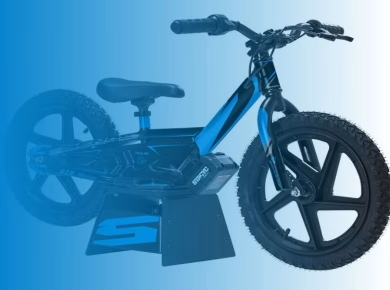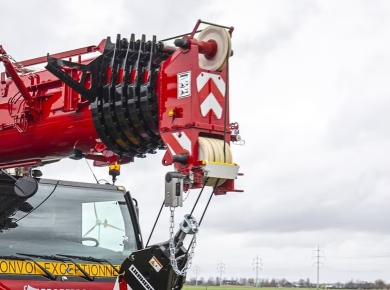If you’re struggling with tool box organization, you’ve probably encountered the frustration of digging through a jumbled mess of wrenches, screwdrivers, and bits—like when you need a specific Allen wrench for a quick repair but can’t find it buried under everything else. After helping countless clients streamline their tool storage and organization, here’s what actually works.
Understanding the Challenge: Why Tool Organization Matters
Efficient tool organization is essential not just for saving time but also for enhancing productivity and ensuring safety. A chaotic tool box can lead to accidents, lost time, and ultimately increased costs as you replace items you couldn’t find when you needed them. In a world where DIY projects, home repairs, and professional tasks often overlap, having a systematic approach to tool organization can transform your workspace and workflow.
How to Maximize Limited Space in Your Tool Box
When you’re working with a limited space in your tool box, the key is to prioritize accessibility and visibility. Here are some proven strategies that can help you maximize every inch of your tool storage.
1. Categorize Your Tools
**Here’s exactly how to start:** Begin by sorting your tools into categories. For example, you could have sections for hand tools, power tools, fasteners, and measuring devices. Use small bins or dividers to keep similar items together. This method not only saves time but also helps you identify what you have and what you might be missing.
Now, here’s where most tutorials get it wrong: they fail to account for the specific needs of your projects. Be sure to consider your most frequently used tools and position them for easy access. For instance, if you’re often working on plumbing repairs, keep your pliers and wrenches within the top layer of your tool box.
2. Utilize Vertical Space
One of the biggest mistakes people make is underutilizing vertical space. If your tool box has a lid, consider adding a pegboard or magnetic strip to the inside of it. This allows you to hang lighter tools like screwdrivers and pliers, keeping them visible and easy to grab.
**Tip:** Use small containers or jars to hold screws, nuts, and bolts, and attach them to the pegboard. It creates a neat display while allowing you to see what you have at a glance.
3. Invest in Drawer Organizers
Drawer organizers are a game changer. If you have a tool box with drawers, choose organizers that can be adjusted to fit your specific tools. Some organizers have customizable compartments that can expand or contract based on your needs.
**A hard-won lesson from my experience:** We learned this the hard way when we tried to fit too many tools into one organizer without considering the need for flexibility. It’s better to have a few well-organized drawers than one overcrowded mess.
Innovative Techniques to Further Enhance Organization
As someone who has spent years in the DIY and repair arena, I’ve discovered a few unconventional hacks that can make a huge difference in your tool box organization.
4. Color-Coding for Clarity
Color-coding isn’t just for kids’ toys. Use colored tape or labels to designate different categories of tools. For example, use red for electrical tools, blue for plumbing, and green for woodworking. This method not only adds a pop of color but also allows you to quickly locate the tools you need without searching through everything.
5. Magnetic Tool Holders
Magnetic tool holders are a fantastic solution for organizing tools in a compact manner. You can attach them to the sides of your tool box or even on a wall if you have the space. These holders keep tools visible and easily accessible, and they prevent scratching and damage that can occur when tools are tossed around in a box.
**Warning:** Never overload your magnetic holders. They can only hold a certain weight, and exceeding that can lead to tools falling and potentially causing injury.
Maintenance: Keeping Your Tool Box Organized
It’s one thing to organize your tool box, but maintenance is where many people struggle. Regularly scheduled check-ups on your organization strategy can keep things running smoothly.
6. Monthly Inventory Checks
Set a reminder to do a monthly inventory check of your tool box. This doesn’t have to be exhaustive; just a quick look to ensure everything is in its place and that nothing is missing. It’s also a good opportunity to clean any tools that have accumulated dust or grime.
**Pro Tip:** During your inventory, take note of any tools that need replacement or servicing. Keeping a running list helps you stay prepared for future projects.
7. Digital Inventory Management
Yes, you can bring tech into your tool organization! Consider using inventory management apps that allow you to track your tools digitally. You can input the names, categories, and even the conditions of your tools. This way, when you’re preparing for a project, you can quickly reference what you have on hand.
**Can you still find a pen and paper effective? Surprisingly, yes—here’s how:** If you prefer old-school methods, maintain a simple notepad in your tool box for jotting down tools you need to replace or repair.
Conclusion: The Long-Term Benefits of Organized Tools
An organized tool box not only enhances efficiency but also cultivates a mindset of readiness and professionalism. Whether you’re a weekend warrior tackling home improvement projects or a seasoned professional, a well-ordered tool box can make all the difference in your workflow.
Remember, the key to maximizing limited space is to be intentional about your organization strategies. With these hacks in your toolkit, you’ll be able to create a workspace that’s not only functional but also inspiring, allowing you to tackle any project with confidence and ease.
By applying these strategies, you’re not just organizing your tools; you’re investing in your productivity and safety, ensuring that you’re ready for whatever task comes your way. Happy organizing!


